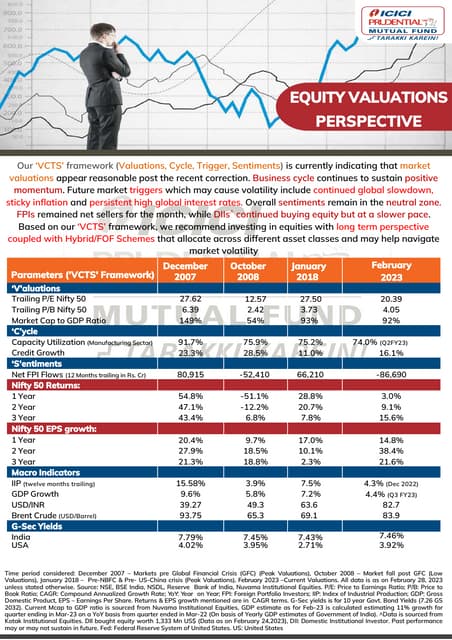Navigating The Chinese Market: Case Studies Of BMW And Porsche

Table of Contents
BMW's Localization Strategy in China
BMW's success in China is largely attributed to its comprehensive localization strategy. This involves a multi-pronged approach encompassing understanding Chinese consumer preferences, establishing a strong local manufacturing and distribution network, and engaging effectively through digital marketing.
Understanding Chinese Consumer Preferences
BMW conducted extensive market research to understand the specific needs and preferences of Chinese consumers. This included studying factors like preferred vehicle size, technological features, and design aesthetics. Unlike many Western markets, larger vehicles are highly favored in China. This understanding guided BMW's product development and adaptation.
- Longer Wheelbases: BMW adapted its models to incorporate longer wheelbases, catering to the Chinese preference for spacious interiors.
- Technology Focus: Integration of advanced technology, such as advanced driver-assistance systems (ADAS) and connected car features, proved crucial in appealing to tech-savvy Chinese consumers.
- Trim Options: Specific trim packages and color options were offered to align with popular styles and preferences in the Chinese market.
Manufacturing and Distribution in China
BMW's commitment to local production has been pivotal in its Chinese success. By establishing manufacturing facilities within the country, BMW benefits from reduced transportation costs, quicker delivery times, and enhanced responsiveness to market demands. This localized approach contributes to efficient supply chain management in China.
- Factory Locations: BMW operates several manufacturing plants across China, strategically located to serve key regional markets.
- Local Partnerships: Collaborations with Chinese suppliers ensure access to local resources and expertise, further streamlining operations.
Digital Marketing and Engagement in China
BMW recognizes the importance of digital marketing in China. The company leverages popular social media platforms like WeChat and Weibo to reach and engage Chinese consumers effectively. Their strategies incorporate targeted advertising campaigns and interactive content to build brand loyalty.
- WeChat Engagement: BMW actively utilizes WeChat official accounts for customer service, promotions, and building a strong online community.
- Targeted Online Campaigns: Data-driven digital advertising campaigns help BMW reach specific consumer segments with personalized messaging.
- E-commerce Integration: BMW's online sales platform seamlessly integrates with its digital marketing efforts, offering a convenient purchasing experience.
Porsche's Premium Positioning in the Chinese Market
Unlike BMW's focus on broader market penetration, Porsche has adopted a strategy centered around maintaining its premium brand image and targeting high-net-worth individuals (HNWIs).
Maintaining Brand Exclusivity
Porsche meticulously cultivates its brand image as a symbol of luxury and performance. This involves carefully managing its marketing campaigns and product offerings, ensuring exclusivity remains a core brand value in the Chinese luxury automotive market.
- Limited Edition Models: Porsche regularly releases limited edition models tailored to the Chinese market, enhancing their appeal amongst affluent consumers.
- Brand Storytelling: Porsche's marketing narratives emphasize heritage, craftsmanship, and performance, resonating with the values of its target audience.
Targeting High-Net-Worth Individuals
Porsche's marketing efforts are heavily focused on reaching and engaging China's growing population of HNWIs. This involves utilizing specialized channels and cultivating relationships with key influencers within this segment.
- Exclusive Events: Porsche hosts exclusive events and experiences, providing opportunities for HNWIs to engage with the brand in a personalized manner.
- Strategic Partnerships: Collaborations with luxury brands and high-profile events further enhance Porsche's association with exclusivity.
After-Sales Service and Customer Experience
In the luxury automotive segment, exceptional after-sales service and customer experience are paramount. Porsche places significant emphasis on building strong relationships with its customers in China.
- Dedicated Dealer Network: Porsche maintains a premium dealer network across China, ensuring high standards of customer service and convenience.
- Personalized Customer Care: Individualized attention and tailored solutions form a cornerstone of Porsche's customer relationship management (CRM) strategy in China.
Key Differences and Lessons Learned
BMW and Porsche's approaches highlight the diverse strategies that can be successful in the Chinese market. BMW's emphasis on localization and mass-market appeal contrasts with Porsche's strategy of maintaining exclusivity and targeting a niche segment. Both strategies demonstrate the importance of tailoring strategies to the specific target audience and market conditions.
- BMW: Demonstrates success through broad appeal, strong localization, and digital engagement.
- Porsche: Showcases the viability of a premium positioning strategy, focusing on exclusivity and HNWIs.
Both companies faced challenges, including navigating complex regulations and fierce competition. However, their successes underscore the necessity of understanding consumer behavior, adapting products and services, and investing in robust local infrastructure.
Conclusion
Navigating the Chinese market requires a nuanced understanding of its complexities. The BMW and Porsche case studies highlight the critical role of localization, targeted marketing, and a deep understanding of consumer preferences. While distinct in their approaches, both brands demonstrate the potential for significant success in this dynamic market. To thrive, companies must develop tailored strategies that consider both the unique aspects of the Chinese market and their own brand identity. To learn more about developing your own effective market entry strategy in China, consider researching further into market segmentation strategies specific to the automotive sector in China and consult with experts in international business and Chinese market analysis. Understanding how to navigate the Chinese market is crucial for any company aiming for global success.

Featured Posts
-
 Berger And Weiss Freed Hostages To Perform At March Of The Living
May 26, 2025
Berger And Weiss Freed Hostages To Perform At March Of The Living
May 26, 2025 -
 Soerloth La Liga Da Muhtesem Baslangic 4 Gol Birden
May 26, 2025
Soerloth La Liga Da Muhtesem Baslangic 4 Gol Birden
May 26, 2025 -
 Urgent Flash Flood Warning For Bradford And Wyoming Counties Tuesday Evening
May 26, 2025
Urgent Flash Flood Warning For Bradford And Wyoming Counties Tuesday Evening
May 26, 2025 -
 Elon Musks Influence On Dogecoin A Shifting Landscape
May 26, 2025
Elon Musks Influence On Dogecoin A Shifting Landscape
May 26, 2025 -
 Understanding High Stock Market Valuations Bof As Perspective For Investors
May 26, 2025
Understanding High Stock Market Valuations Bof As Perspective For Investors
May 26, 2025
